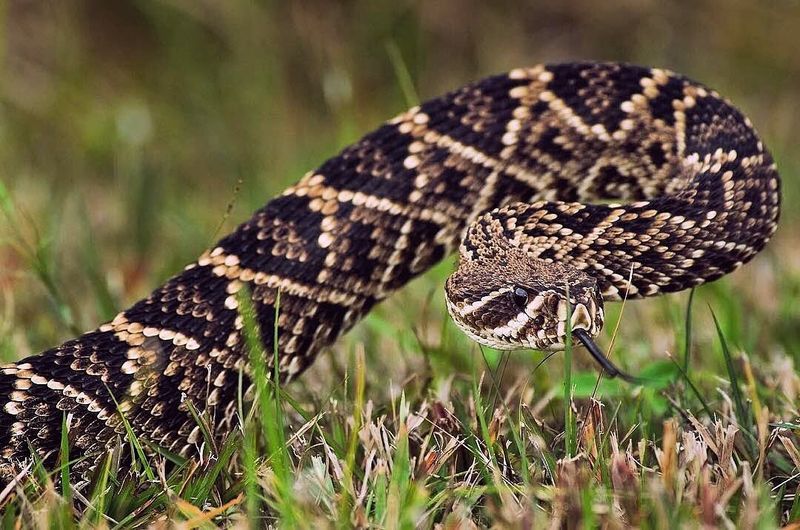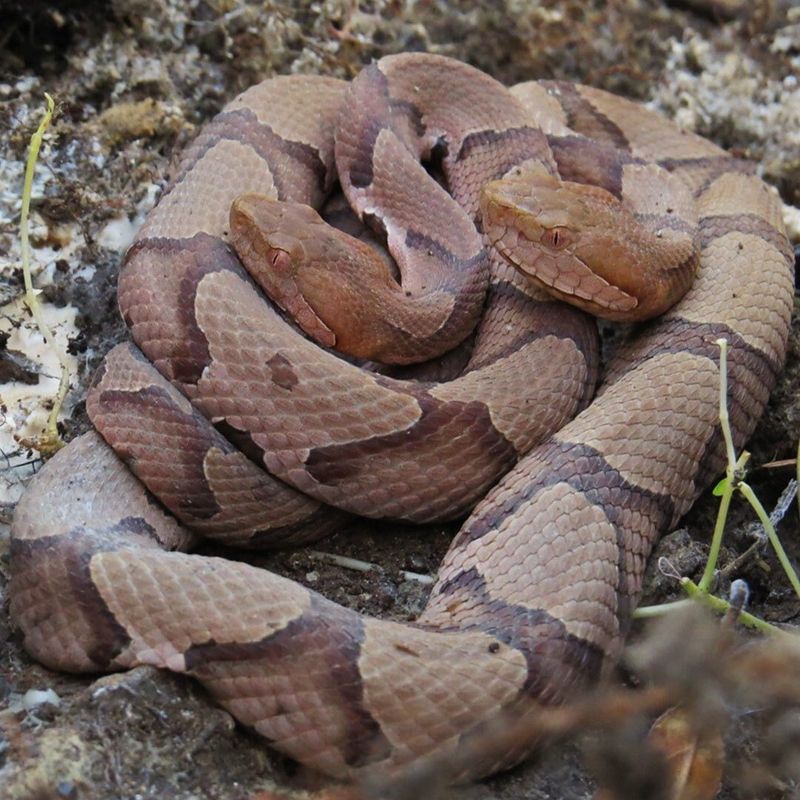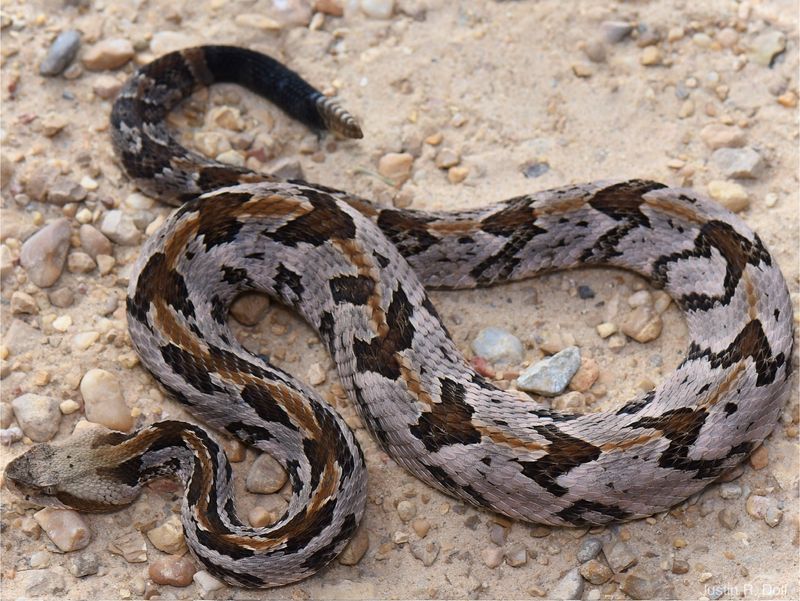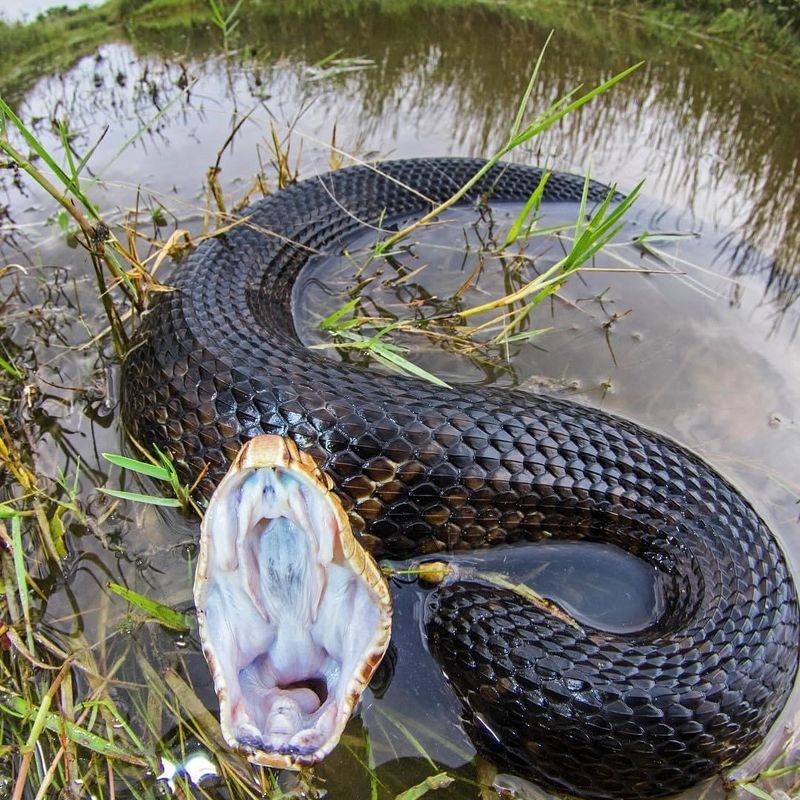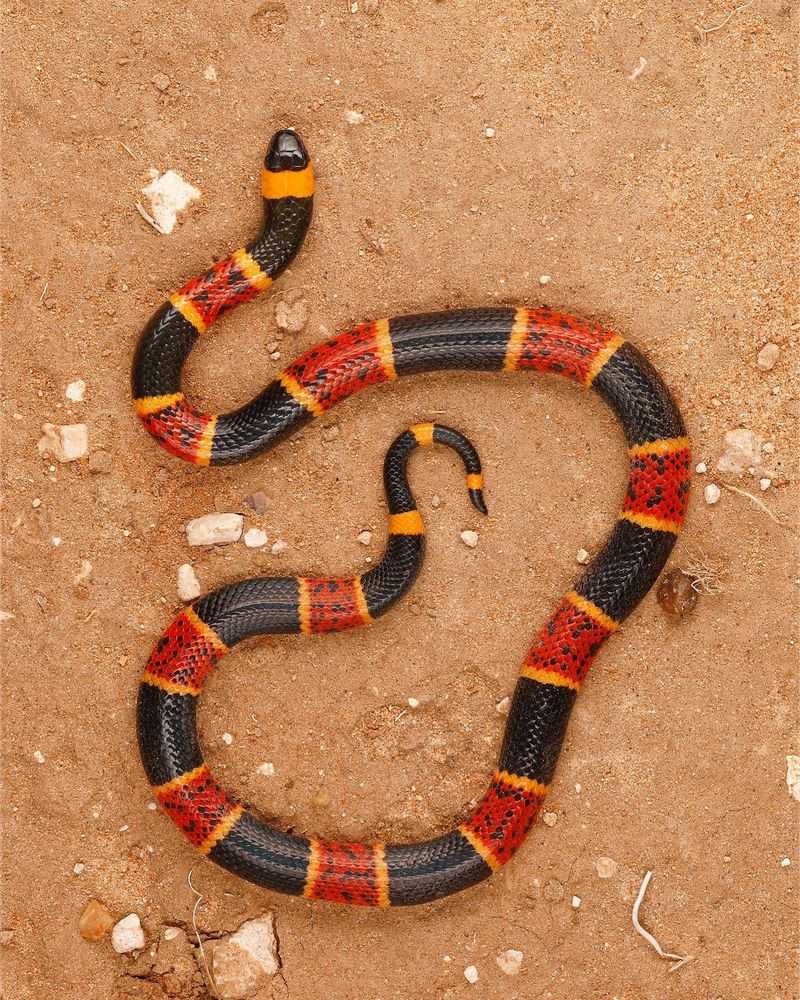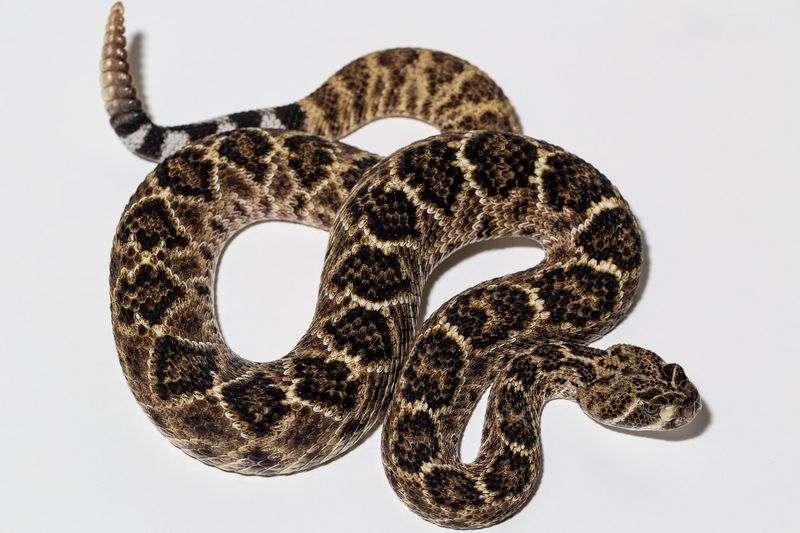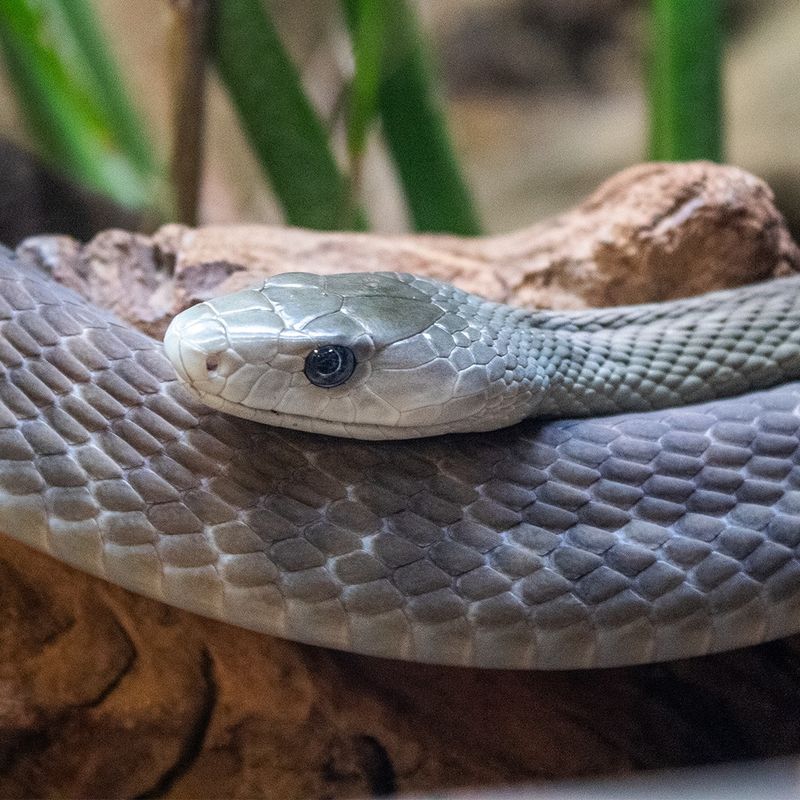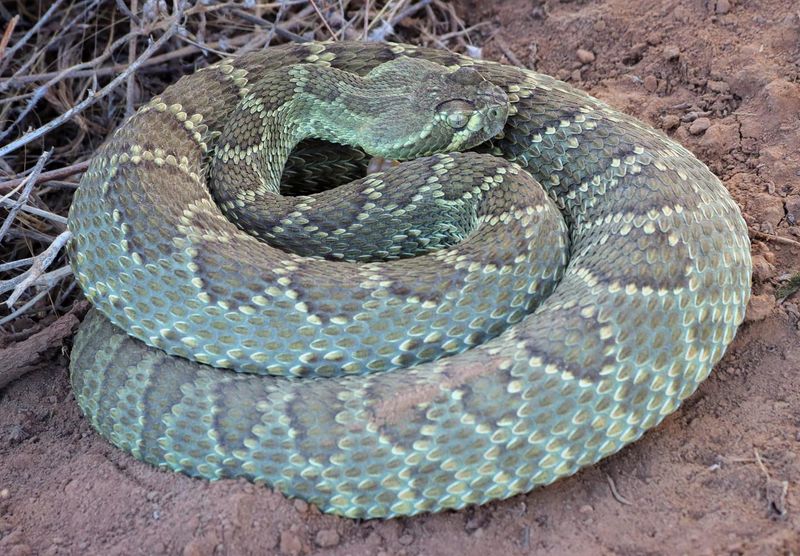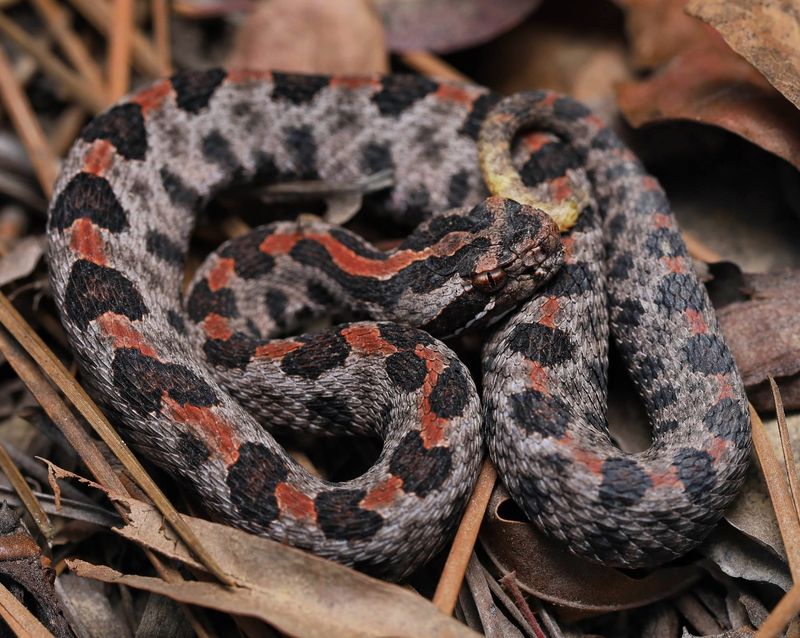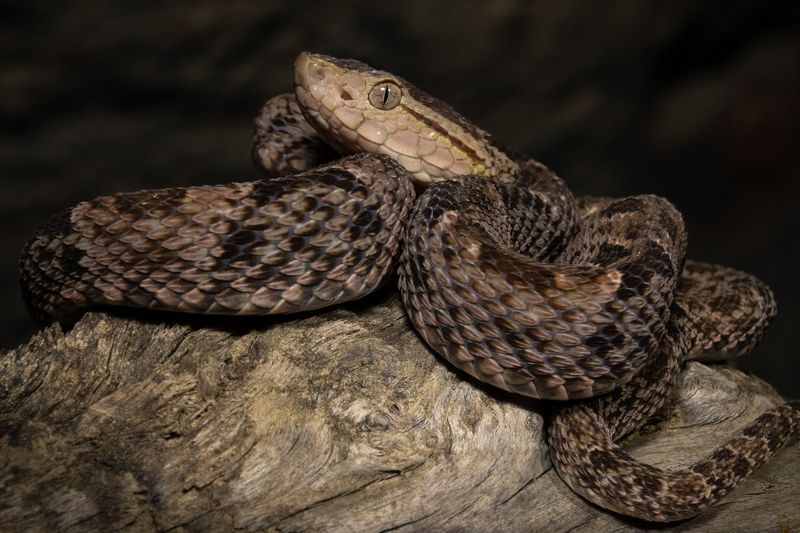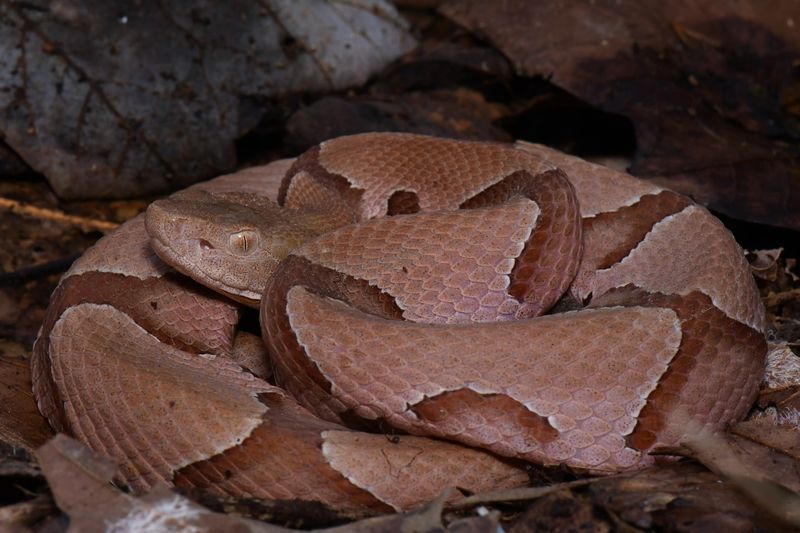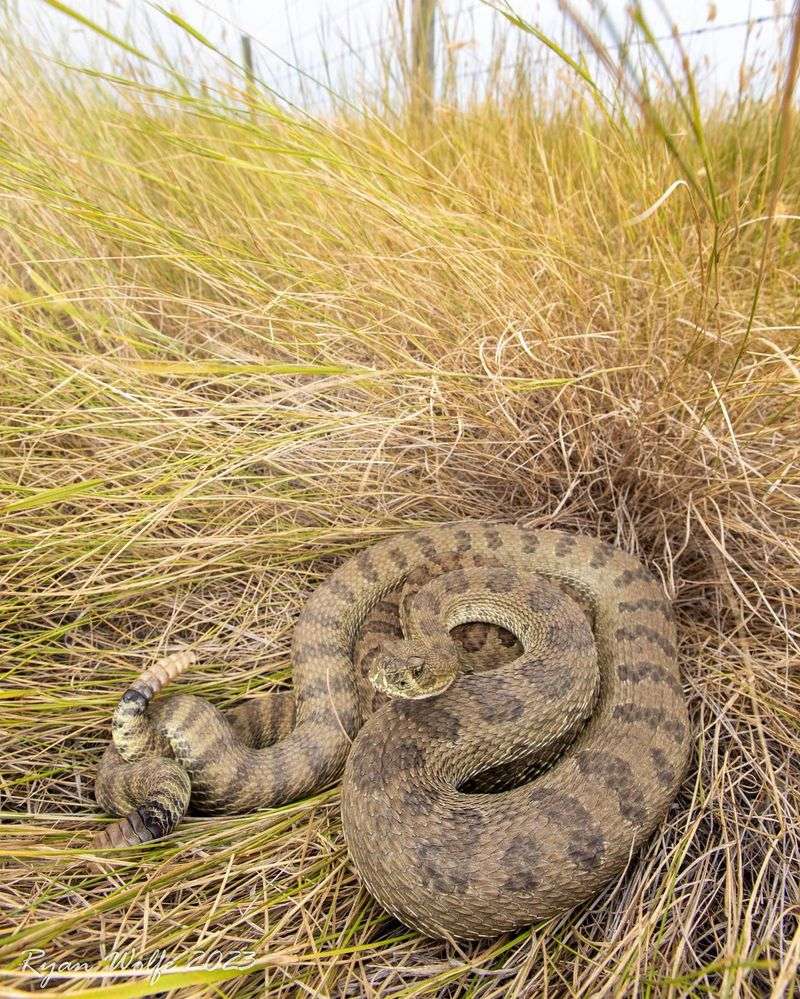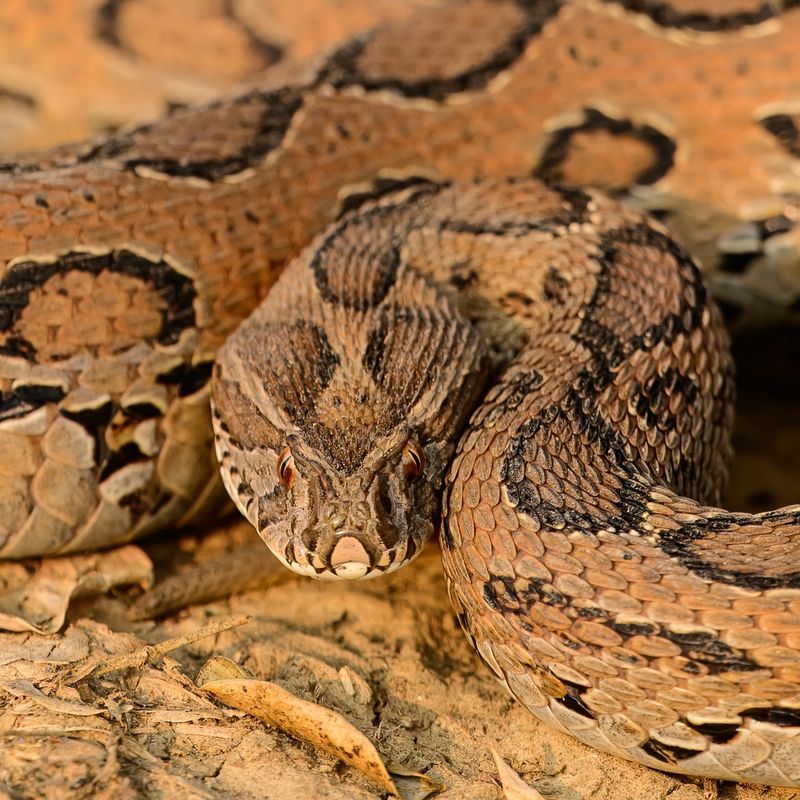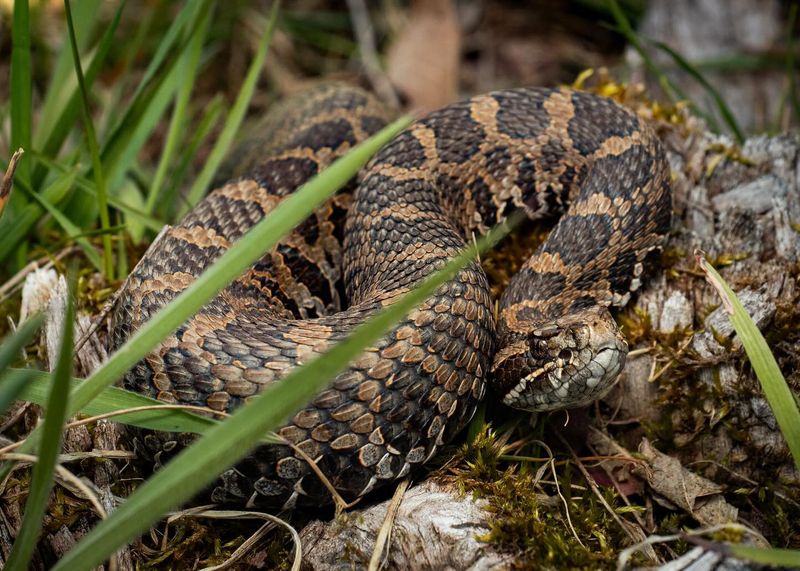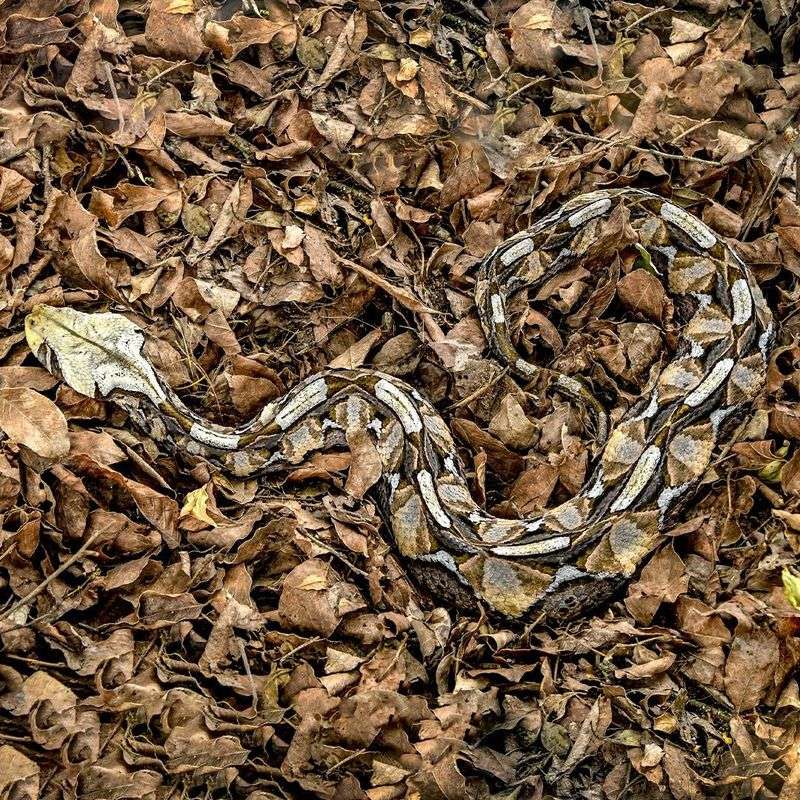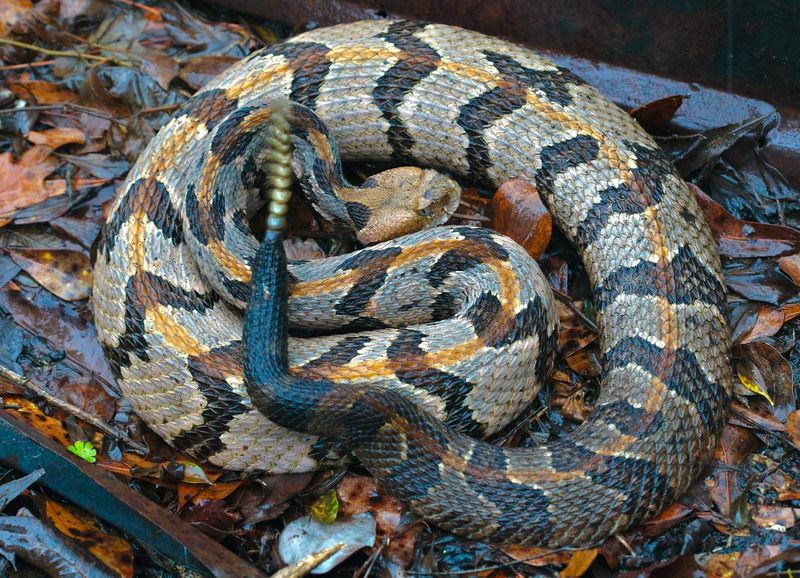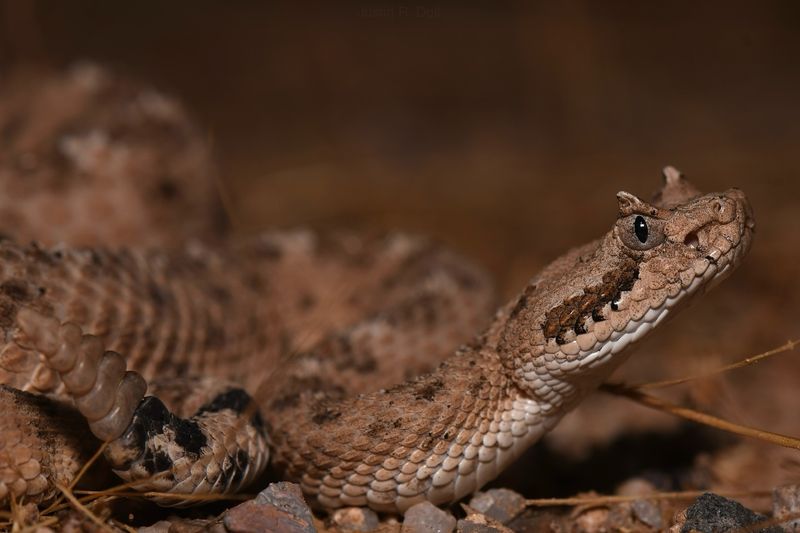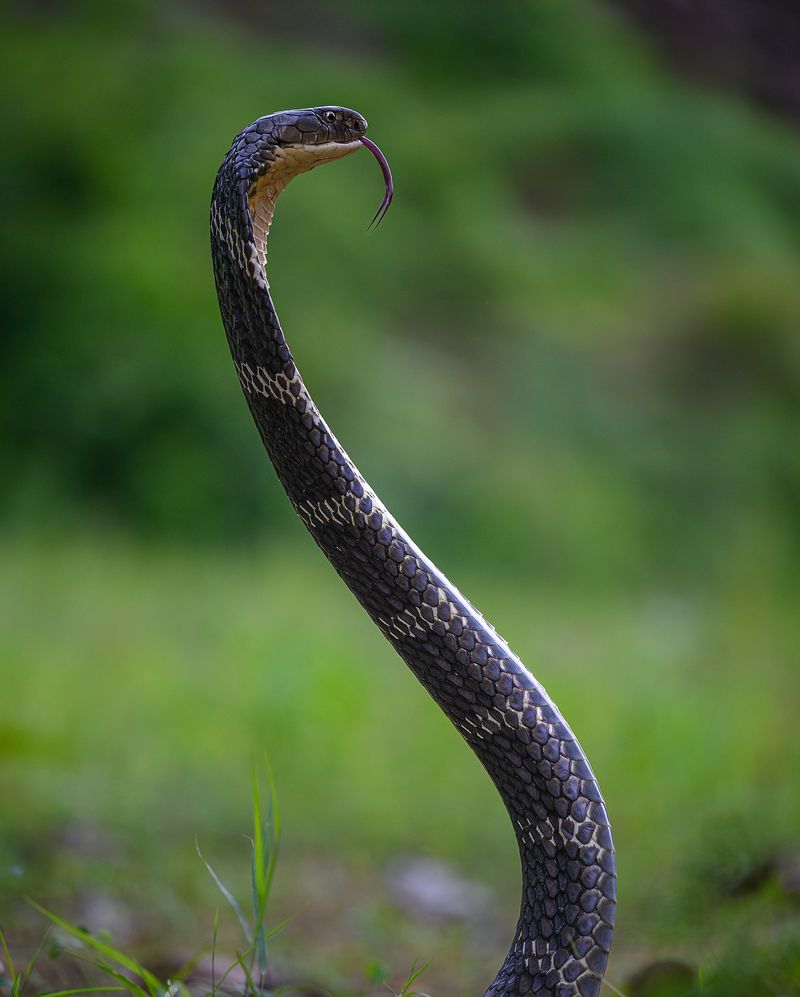Some snakes are harmless, but others? You definitely don’t want them slithering through your yard. I’ve had a surprise encounter or two, and trust me—it’s not the kind of garden guest you hope for.
These sneaky visitors can be dangerous, and knowing which ones to watch for makes all the difference. It’s not about panic—it’s about being prepared.
Let’s go through the ones you’ll want to keep far, far away.
1. Eastern Diamondback Rattlesnake
America’s largest venomous snake packs a deadly punch with hemotoxic venom that destroys tissue and blood cells. Growing up to 8 feet long, these rattlers are responsible for more snakebite deaths in the southeastern United States than any other species.
Their distinctive diamond pattern and warning rattle might save your life, giving you precious seconds to retreat. They typically avoid humans but will strike if threatened. Medical attention after a bite is absolutely critical – don’t delay seeking treatment.
2. Copperhead
Perfectly camouflaged among fallen leaves, copperheads deliver painful bites without warning. Their coppery-red heads and hourglass-patterned bodies blend seamlessly into forest floors and suburban landscapes throughout the eastern and central United States.
Unlike rattlesnakes, they give no audible warning before striking. Though rarely fatal to adults, their venom causes intense pain, swelling, and potential tissue damage. They’re especially concerning because they often live near human homes and frequently bite when accidentally stepped on.
3. Timber Rattlesnake
Sporting a powerful build and potent venom, timber rattlesnakes deserve serious respect. Their color varies from yellow to black, with dark bands crossing their bodies and a distinctive rattle that serves as nature’s warning system.
Found throughout eastern North America, these snakes typically avoid confrontation but defend themselves fiercely when cornered. Their venom is particularly dangerous, containing both neurotoxic and hemotoxic components. They prefer wooded areas but occasionally venture into yards adjacent to forests.
4. Water Moccasin
Also known as cottonmouths, these semi-aquatic pit vipers display their white mouths as a threatening warning. Their thick bodies and dark coloration make them intimidating residents of southern waterways, swamps, and wet areas.
Unlike many snakes that flee when confronted, water moccasins often stand their ground. They’re particularly concerning for homeowners near water features or in flood-prone areas. Their painful bites can cause permanent tissue damage and require immediate medical attention.
5. Coral Snake
Deceptively beautiful but deadly, coral snakes showcase bright red, yellow, and black bands. Remember the rhyme: “Red touch yellow, kill a fellow” to distinguish them from harmless mimics like kingsnakes, which have red bands touching black instead.
Their neurotoxic venom attacks the nervous system and can cause respiratory failure. Unlike pit vipers, coral snakes have small fangs and must chew to deliver venom. Found primarily in the southern United States, they’re shy but dangerous when handled.
6. Western Diamondback Rattlesnake
Aggressive and territorial, the Western Diamondback doesn’t retreat easily when encountered. These iconic desert dwellers deliver large amounts of venom with each bite, making them responsible for the majority of snakebite fatalities in the southwestern United States.
Their distinctive diamond pattern and black-and-white banded tail are key identification features. They thrive in arid environments but adapt well to suburban areas, particularly those bordering natural desert habitat. Their rattle serves as a warning, but they don’t always sound it before striking.
7. Black Mamba
Though not native to North America, this African snake deserves mention as one of the world’s deadliest reptiles. Sometimes kept as exotic pets, escaped black mambas present a nightmare scenario for any neighborhood.
Lightning-fast and highly aggressive when threatened, they can move at speeds up to 12.5 miles per hour. Their neurotoxic venom can kill a human within 20 minutes without antivenom. Gray rather than black (the name refers to the mouth interior), they’re among the most feared snakes globally.
8. Mojave Rattlesnake
Packing the most potent venom of any North American rattlesnake, the Mojave creates medical emergencies with every bite. Its venom contains unique neurotoxins that can cause respiratory failure alongside the tissue damage typical of other rattlesnake bites.
Often confused with the Western Diamondback, these snakes have a distinctive greenish hue and prefer desert habitats. They’re particularly dangerous because their bites may initially seem less severe, causing victims to delay critical medical treatment until neurological symptoms begin.
9. Pygmy Rattlesnake
Don’t let the small size fool you – these diminutive vipers pack a serious punch. Rarely exceeding 2 feet in length, pygmy rattlesnakes are easily overlooked but deliver painful, venomous bites that require medical attention.
Their tiny rattle produces a buzz that’s often mistaken for an insect. Common throughout the southeastern United States, they frequently turn up in gardens, mulched areas, and landscaping. Their small size makes them harder to spot and more likely to be accidentally encountered during yard work.
10. Fer-de-lance
Among the most dangerous snakes in Central and South America, escaped or illegally imported specimens pose serious risks. Responsible for more snakebite deaths in its native range than any other species, this pit viper delivers devastating venom.
Extremely aggressive when threatened, they’re known to stand their ground rather than flee. Their pattern provides excellent camouflage in leaf litter and vegetation. Though not established in the U.S., occasional reports of escaped specimens create legitimate concerns in southern states.
11. Southern Copperhead
Masters of disguise, southern copperheads blend perfectly with fallen leaves and pine straw. Their coppery coloration and hourglass-shaped crossbands make them nearly invisible in natural ground cover, leading to accidental encounters.
Unlike some venomous snakes, they rarely give warning before striking when startled. Common throughout the southeastern United States, they frequently inhabit suburban areas and are responsible for numerous bites each year. Fortunately, their venom is less potent than many other vipers.
12. Prairie Rattlesnake
Widespread across the Great Plains and western states, prairie rattlesnakes thrive in grasslands and agricultural areas. Their yellowish-brown bodies with dark oval blotches help them disappear in prairie grasses and farmland.
Yards bordering natural grasslands frequently attract these snakes, especially during drought conditions when they search for water. Though not particularly aggressive, they defend themselves vigorously when cornered. Their venom causes significant tissue damage and requires prompt medical treatment.
13. Russell’s Viper
Another non-native but occasionally encountered as an escaped exotic pet, Russell’s viper ranks among the deadliest snakes worldwide. Responsible for thousands of deaths annually in its native Asia, this snake’s venom causes catastrophic bleeding and organ failure.
Highly irritable and quick to strike, they pose extreme danger if encountered. Their distinctive chain-link pattern of oval spots helps with identification. Though rare in North America, illegal pet trade specimens occasionally escape, creating potential neighborhood emergencies.
14. Massasauga Rattlesnake
Secretive and often overlooked, these small rattlesnakes inhabit wet areas across the Midwest and Great Lakes regions. Growing to just 2-3 feet long, they’re frequently encountered in yards bordering marshes, swamps, and wet prairies.
Their gray bodies with dark blotches provide excellent camouflage in tall grass. Though less venomous than larger rattlesnakes, their bites cause significant pain and tissue damage. Conservation efforts protect these declining snakes in many states, making proper identification important.
15. Gaboon Viper
Sporting the longest fangs of any snake (up to 2 inches) and enormous venom glands, escaped Gaboon vipers present nightmare scenarios. These African snakes deliver massive amounts of venom with each bite, causing rapid and extensive tissue destruction.
Their incredible leaf-like camouflage makes them nearly invisible on forest floors. Though extremely rare in North America outside of zoos, escaped specimens occasionally make headlines. Their docile nature belies their deadly potential – they rarely strike unless directly touched.
16. Canebrake Rattlesnake
A subspecies of timber rattlesnake, canebrakes inhabit lowland areas throughout the southeastern United States. Their distinctive rusty-orange dorsal stripe and black tail make them relatively easy to identify compared to other rattlesnakes.
Common in rural and suburban areas bordering forests, they frequently venture into yards during summer months. Though generally not aggressive, they deliver serious bites when threatened. Their preference for cane thickets and dense vegetation often brings them into contact with humans clearing land.
17. Sidewinder
Famous for their unique sideways locomotion, these desert-dwelling rattlesnakes leave distinctive J-shaped tracks in sand. Their specialized scales and movement help them navigate loose desert soil and avoid overheating in extreme temperatures.
Relatively small but potent, sidewinders pose significant dangers to desert homeowners. Their horned scales above the eyes create a distinctive appearance. Most active at night, they sometimes seek shelter around homes and outbuildings during extreme heat, increasing the risk of unexpected encounters.
18. King Cobra
The world’s longest venomous snake can deliver enough neurotoxin to kill an elephant. Though not native to North America, illegally imported or escaped specimens create legitimate public safety emergencies when reported.
Capable of raising up to one-third of their body length and flaring their distinctive hood, king cobras present an unmistakable threat display. Their intelligence and speed make them particularly dangerous. A single bite can deliver 7ml of venom – enough to kill 20 people.


